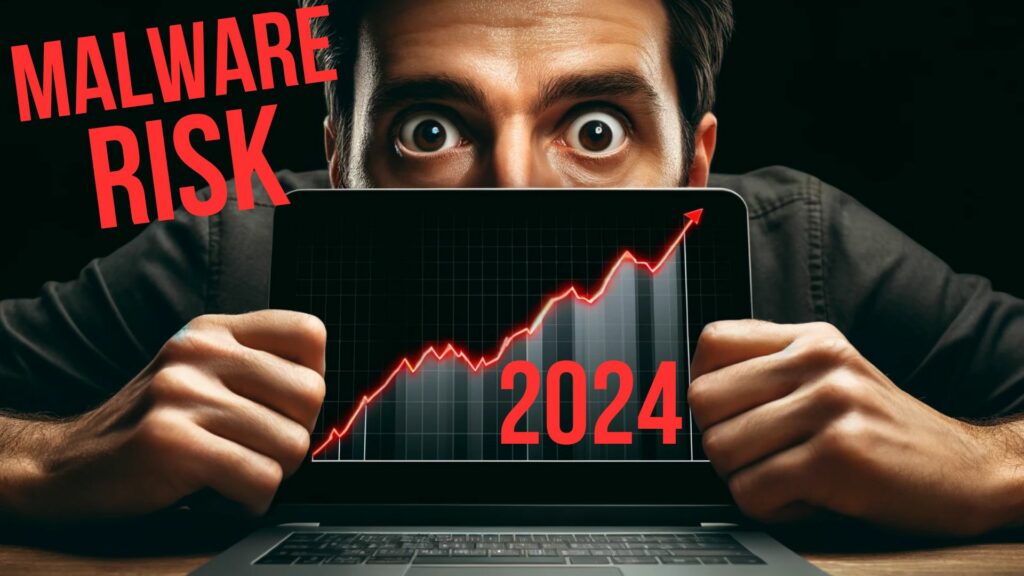A (TPRM) or Third-Party Risk Management program is a structured approach to identifying, assessing, monitoring, and mitigating risks associated with third-party vendors or service providers. These are external organizations that a company relies on for various business needs, such as IT services, manufacturing, supply chain management, and more.
As businesses rely on increasing third-party providers, the risks associated with these third parties also grow. For example, a third-party vendor’s system breach could lead to unauthorized access to a company’s data or disrupt its operations. Your business needs to have a systematic approach to managing these risks.
Key components of a Third-Party Risk Management program program include:
- Risk Identification: Understand the nature and level of engagement with third parties and their potential risks. This might involve categorizing vendors based on the criticality of their service or product.
- Due Diligence: Before onboarding, evaluate the third party’s processes, policies, and controls, especially if they handle sensitive data or critical business processes.
- Contract Management: Ensure that contracts with third parties explicitly define responsibilities related to security, data protection, and other risks. This can include right-to-audit clauses or requirements for security certifications.
- Continuous Monitoring: Regularly review and assess the third party’s risk profile. This might involve periodic audits, performance reviews, or cybersecurity assessments.
- Incident Management: Define processes to handle potential incidents or breaches that involve third parties. This ensures a coordinated response if something goes wrong.
- Risk Mitigation: Implement controls and measures to mitigate identified risks. This could involve data encryption, access controls, or ensuring redundancy in supply chains.
- Performance Metrics and Reporting: Track the effectiveness of the TPRM program, and report to senior management or the board on key metrics and potential issues.
- Termination Procedures: Understand and define the process to end the relationship with a third party, ensuring all data is returned or destroyed and access is revoked.
Incorporating a robust TPRM program is increasingly seen as best practice, and in some sectors, it’s becoming a regulatory requirement. Organizations can safeguard their assets, reputation, and operations by effectively managing third-party risks.
A Third-Party Risk Management Program
Imagine you’re planning to host a big barbecue party in your backyard. Before the event, you hire a few vendors: one for food, another for music, and a third for setting up tents and seating.
Think of Risk Identification as listing everything that could go wrong with these service providers or identifying operational risk.
- Food Provider:
- What if they deliver the food late?
- What if the food isn’t fresh or, even worse, it’s contaminated?
- Music Provider:
- What if their equipment malfunctions and there’s no music?
- What if they play inappropriate songs?
- Tent and Seating Provider:
- What if the chairs they provide are weak and broken?
- What if the tent isn’t anchored properly and falls?
By identifying these potential problems (or “risks”) as part of your vendor management process, you can take steps to prevent them or have backup plans.
Now, bring this concept back to your small business. When you have third-party relationships with service providers (like the ones for your barbecue), you want to think about what could go wrong. This is the essence of “Risk Identification”.
For your business, risks might include:
- IT Service Provider:
- Could they expose your company’s sensitive data because of poor cyber security risk measures?
- What if their service goes down, disrupting your operations?
- Product Supplier:
- Do they have a history of delayed shipments?
- What if the quality of their products doesn’t meet your standards?
- Delivery Service:
- How do they handle goods? Could there be potential damage?
- What’s their on-time delivery rate? What if they’re consistently late?
Identifying these risks helps you be better prepared. It lets you choose providers who don’t have these issues or put measures in place to handle them if they occur.
In short, for a small business owner, Risk Identification is about foreseeing potential problems with the third parties you work with so you’re not caught off guard. It’s always better to anticipate and be prepared than to react when things go wrong.
Certainly! Let’s break down the concept of “due diligence” within a Third-Party Risk Management (TPRM) program for a small business owner.
What is Due Diligence?
In the broadest sense, due diligence is a thorough investigation or examination of something. When working with a third-party risk management program, due diligence is carefully reviewing and assessing a vendor before entering a business relationship. It’s like doing a thorough background check on someone before hiring them.
Why is Due Diligence Important for a Small Business?
- Inherent Risk: Small businesses may not have the same resources as larger corporations to recover from a major mishap, like a data breach caused by a third-party vendor. By performing due diligence, you can identify potential risks and avoid them.
- Financial Risk: You want to ensure the vendor is financially stable and won’t suddenly go out of business, potentially leaving you without a crucial service or product.
- Reputational Risk: Small businesses often rely heavily on their reputation. If a third party you’re associated with faces a scandal or delivers subpar services, it could reflect poorly on your business.
How to Perform Due Diligence Risk Assessment for Small Business:
- Research the Vendor: Look into their history, reputation, and any previous issues or controversies. Reviews, testimonials, and news articles can provide insight.
- Check Financial Stability: If possible, understand their financial health. You don’t want to tie your operations to a vendor who might be on the brink of bankruptcy.
- Understand Data Handling: If they have access to your data (especially customer data), understand how they’ll handle, store, and protect it. This is crucial for avoiding data breaches.
- Evaluate Their Security Measures: Ensure their cybersecurity risk measures are up to par. They might have access to your systems even if they aren’t tech vendors.
- Ask for References: Talk to other businesses they’ve worked with. This can give you a sense of their reliability and professionalism.
- Review Legal and Compliance Aspects: Ensure they comply with any industry-specific regulations that might apply to you. Also, ensure the contract you’re entering into protects your interests.
- Site Visits: If relevant and feasible, visit their operation center or facility. This can give you a firsthand look at their processes.
In essence, due diligence is about doing your homework before partnering with another company. It’s about ensuring that this partnership will benefit your small business and not bring unforeseen risks.
Contract Management
Contract Management is about ensuring your agreements with external vendors or partners are clear and protect your business’s interests. At a high level:
- Clarity: The contracts you sign should clearly outline what’s expected from both parties. This includes the services provided, deadlines, payment terms, and more.
- Protection: Contracts need clauses that address potential risks. For instance, if you’re sharing sensitive data with a vendor, the contract should specify how the data is protected and what happens if there’s a breach.
- Review: As your business grows or changes, revisit contracts to ensure they remain relevant. Ensure that there are provisions for periodic reviews, especially if the vendor relationship is long-term.
- Exit Strategy: Contracts should detail how to end the partnership, ensuring your business can retrieve any shared data or assets and smoothly transition if needed.
Contract Management ensures that you have written agreements that clearly define expectations and safeguards as you engage with external parties, protecting your business from unforeseen challenges.
Continuous Monitoring Best Practices
Continuous Monitoring of Third-Party Risks means regularly checking and evaluating your third-party vendors or partners to identify and mitigate risks. Imagine you hire an external company to handle your customer data or manage your website. This company might face new challenges, change its practices, or have security issues as time passes.
Rather than just vetting them once when you first hire them, Continuous Monitoring means you keep an ongoing watch. It’s like not just checking the credentials of a babysitter when you first hire them but also making periodic check-ins to ensure everything’s okay while you’re out.
For a small business, this ensures that the third-party companies you rely on remain trustworthy and capable, protecting your business’s reputation, finances, and data. This doesn’t always mean a deep dive into their operations but might be as simple as regular check-ins, reviews, or automated alerts for potential issues. Think of it as a safety net, ensuring you’re always in the know about the health and reliability of those you partner with.
Incident Management Program as part of Risk Management Strategy
Incident Management prepares for and responds to unexpected events or disruptions arising from your relationships with external vendors or service providers. Think of it as a contingency plan for when things don’t go as expected with a partner company.
Key steps include:
- Preparation: Understand potential incidents. For example, a supplier might be unable to deliver goods on time.
- Detection: Realize when an incident has occurred. Maybe you’re alerted to a data breach at a vendor managing your customer information.
- Response: Take action. This might involve finding an alternative supplier or informing affected customers about a breach.
- Recovery: Return to business as usual and correct any issues.
- Review: After everything’s settled, evaluate how the incident was handled and look for improvements.
Incident Management is important to your third-party risk management program and ensures you’re not caught off-guard by third-party mishaps and have a clear plan to address and recover from them.
Risk Mitigation Management Lifecycle
Risk Mitigation is a business’s strategy and actions to reduce the potential negative consequences of using third-party vendors or service providers. Imagine owning a cafe and using a local bakery for your pastries. If that bakery is known for late deliveries, your cafe might have empty display shelves in the morning. To mitigate this risk, you might keep a backup supplier or maintain an emergency stock of pastries.
Similarly, in a third-party risk management program, risk mitigation could involve:
- Selecting vendors with a proven track record.
- Including clauses in contracts that protect your business against potential vendor failures.
- Regularly checking on the vendor’s performance and security practices.
- Having backup plans in case a critical vendor fails to deliver.
Risk mitigation is about foreseeing potential problems with third parties and taking steps to prevent them or minimize their impact on your business.
Performance Metrics and Reporting to Identify Security Risks
Performance Metrics and Reporting covers how well your external partners (like vendors or service providers) are adhering to the standards and requirements you’ve set.
For a small business owner, think of it like this: If you hire someone to handle your website and another to manage inventory, you’d want a simple way to know they’re doing their jobs safely and correctly. Metrics are those measurable indicators – like the number of security incidents, response times to issues, or quality of service.
Regularly gathering these metrics and presenting them in an understandable format helps give you a high-level overview of how the partnership performs. So, routinely, say once a month or quarter, you review reports showing how each partner is performing. This lets you spot potential problems (like a vendor consistently missing security updates) and make informed decisions (like renewing their contract or finding a new partner).
In essence, Performance Metrics and Reporting in a third-party risk management program give you a clear snapshot of how safe and efficient your collaborations with external parties are, allowing you to protect and grow your business.
Third-Party Risk Management (TPRM) Termination Procedures
Termination Procedures are the steps you take to end your relationship with a vendor or service provider.
- Notification: Inform the third party about the decision to end the relationship, adhering to any notice periods specified in your contract.
- Data Handling: Ensure any data or information shared with them is returned to you or securely destroyed so it doesn’t get misused.
- Access Revocation: Cut off their access to your systems, platforms, or any shared resources.
- Final Payments: Settle any outstanding payments or invoices to ensure there are no financial loose ends.
- Documentation: Keep a record of the termination process, including reasons for ending the relationship and any lessons learned.
In short, these procedures ensure you part ways with vendors in a manner that keeps your business’s interests and data secure.
Don’t Wait, Secure Your Business Now with ZZ Servers Risk Management Program!
Safeguarding your operations and maintaining a trustworthy reputation is more important than ever. With ZZ Servers’ Third-Party Risk Management Program, you get comprehensive protection for your data and mitigate risks that could disrupt your business. Our team of experienced professionals offers robust security measures designed to prevent data breaches and maintain operational stability.
Isn’t it time to streamline your business operations? With ZZ Servers, you get more than just security. You get a partner committed to enhancing accountability, simplifying your IT infrastructure, and freeing your internal resources to concentrate on your core operations. Services like Endpoint Security, Mobile Device Management, Incident Response Planning, 24/7 Support, On-Site Support, and Remote Assistance are just a phone call away.
Your business deserves the best. Don’t wait until it’s too late. Contact us now to discover how ZZ Servers can protect your business from third-party risks, fortify your data security, and help you achieve peace of mind.



